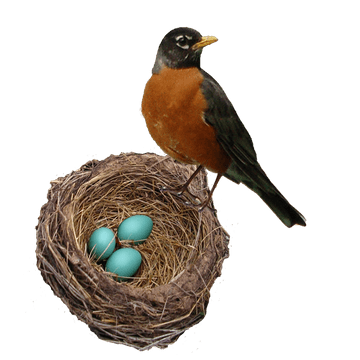If a bird’s nest chances before thee in the way, in any tree or on the ground, with fledglings or eggs, and the mother sitting upon the fledglings, or upon the eggs, thou shalt not take the mother with the young; thou shalt shoo away the mother, but the young thou mayest take unto thyself; that it may be well with thee, and that thou mayest prolong thy days.
(Deut. 22:6-7)
Many years ago, I was at a physics conference in Princeton in honor of the 85th birthday of John Archibald Wheeler. At the lunch break, I sat alone at a table to eat my kosher lunch (I was always uncomfortable eating this airplane food typically served at conferences whenever I order kosher food. The sound of unwrapping the cellophane attracts everyone’s attention followed by expressions of sympathy at the pitiful sight of the airplane food). Minutes later, an elderly man, who looked like a Catholic priest, joined me. It turned out he was indeed a Jesuit priest and professor emeritus of physics at Boston University. Because I wore a kippa, he must have mistaken me for a rabbi and decided I was sitting at the table designated for clergy. Then a Buddhist monk dressed in his maroon toga joined us a few minutes later. (While most Buddhist monks wear saffron togas, the Tibetan Buddhists have maroon togas.) Before long, we had an ecumenical table. As it turned out, the Buddhist monk was a close disciple of Dalai Lama and professor of Zen philosophy at Harvard University. Besides physics, he was keenly interested in Judaism, and a lively discussion ensued. He told me he frequently traveled to various Ashrams (Buddhist monasteries) around the world where he’d see a lot of Jews. He wondered why Jews were so attracted to Buddhism. He told me he would always encourage these Jews to leave the Ashram and go study Judaism. He’d say to them, “What are you looking for here? You have a rich mystical tradition of your own. Whatever you seek here, you will find it in Judaism and then some.” He said to me, his biggest wish was to study Judaism in a yeshiva, but no yeshiva would accept a Buddhist monk as a student. We had a good laugh.
I remembered this episode while reading in the Torah the mitzvah (commandment) of shooing away the mother-bird (Heb. šiluach haken), before taking her eggs or chicks from the nest. This mitzvah has a number of simple rational explanations—first and foremost, it teaches us not to be cruel to animals, but to be kind and mindful. Before taking the eggs from the nest, we must shoo away the mother bird so that she does not feel the anguish of seeing her eggs or chicks being taken away. Another explanation is that the Torah teaches us the sustainability and preservation of species. We are allowed to slaughter kosher animals for meat. However, we are prohibited from killing a mother and her child at the same time, as this is not only cruel but endangers the whole species.
However, on a mystical level, this commandment is talking about meditation. In Kabbalah, the mother bird is the euphemism for the sephirah of Binah (understanding). The eggs, on the other hand, represent the sephirah of Ḥoḵmah—the seminal flash of wisdom. The Torah teaches us that to reach the root of wisdom, we need to remove our understanding, that is, clear our mind of thoughts. Thus, on a mystical level, this commandment teaches us about meditation.
There is an ancient tradition of Jewish meditation. It goes back to Biblical times, where aspiring prophets were taught meditation techniques. Meditation was practiced by kabbalists of all ages. In the 12th century, the son of Maimonides, Abraham ben Moshe, wrote a textbook on meditation, hitbodedut. (See Rabbi Aryeh Kaplan, Meditation in the Bible and Meditation in Kabbalah.) In more recent times, the second Lubavitcher Rebbe, Rabbi Dov Ber Shneuri (1773-1827), known as the Mittler Rebbe, wrote a deep treatise on meditation, Ša’arei Yiḥud, which is usually printed with the commentary of Rabbi Hillel Paritcher called Kuntres Hitpalelut. The practice of meditation, hitbonenut, was widely spread among early Hassidim.
The Buddhist monk was right—to learn about meditation and mysticism you don’t need to travel to India or Tibet, you don’t need to enroll in an Ashram. You need to look at home, in our ancient Jewish tradition, which has it all.

I recently read – I think it was in the Thirteen Petaled Rose- but not quite sure – need to look for the passage again, that the Zohar suggests that while the mother bird is Binah – the eggs, i.e. the children are the 7 lower sephirot, not Chochma (which would be the father). The concept here is that when you think you have come across some understanding of Torah – shoo it away so you are not mislead into think you have mastered something…instead focus on the emotions (the 7 lower sephirot) and feelings the insight has given you. This way you continue to search for wisdom and merit “long life” by not ceasing your journey out of a misplaced idea that you now have full understanding. We never can never have full understanding of the infinite. Have you come across this interpretation.